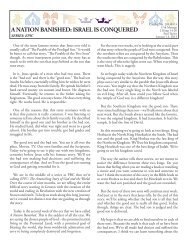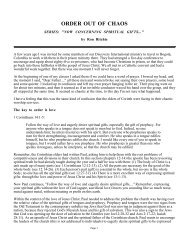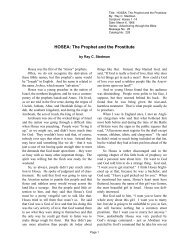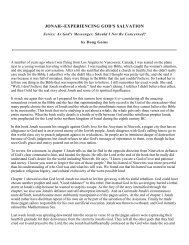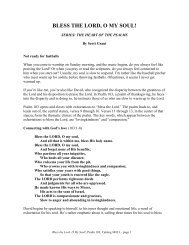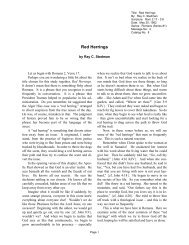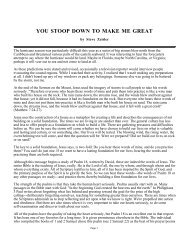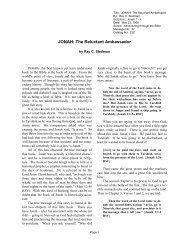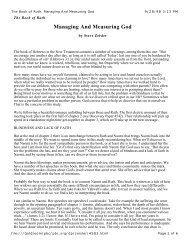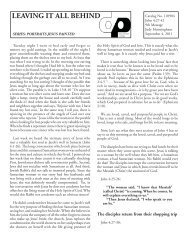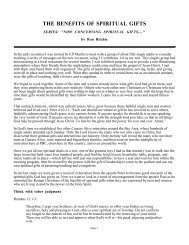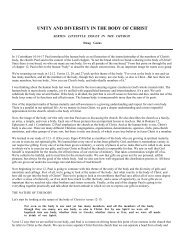Basics of Bible Interpretation - RayStedman.org
Basics of Bible Interpretation - RayStedman.org
Basics of Bible Interpretation - RayStedman.org
Create successful ePaper yourself
Turn your PDF publications into a flip-book with our unique Google optimized e-Paper software.
6 <br />
<strong>Bible</strong> Study Approaches<br />
<strong>Bible</strong> study begins in an attitude <strong>of</strong> prayer, whether expressed in words or quietly reflected in<br />
the heart. The expression <strong>of</strong> the psalmist is exactly what our hearts should say:<br />
Open my eyes, that I may behold<br />
wondrous things out <strong>of</strong> thy law (Psalm 119:18).<br />
Or, as the apostle prays for the Ephesian Christians,<br />
…that the God <strong>of</strong> our Lord Jesus Christ, the Father <strong>of</strong> glory, may give you a spirit <strong>of</strong><br />
wisdom and revelation in the knowledge <strong>of</strong> him, having the eyes <strong>of</strong> your hearts<br />
enlightened, that you may know. (Ephesians 1:17, 18).<br />
And the result should be:<br />
My meditation <strong>of</strong> him shall be sweet: I will be glad in the Lord (Psalm 104:34 KJV).<br />
We really are wholly dependent on God for the illumination <strong>of</strong> his Word to our minds and<br />
hearts. Methodology and techniques, though necessary, are fruitless unless we are truly taught <strong>of</strong><br />
God.<br />
With that desire, then, we can listen, search, compare, meditate, reach conclusions, and be<br />
ready to obey the truth we have discovered. When we have done this, we can expect God to give<br />
opportunity to share what we have learned with others, for he doesn’t want us to keep a good<br />
thing to ourselves. Approaching our study with this attitude we can then use various means to<br />
enhance our understanding <strong>of</strong> the <strong>Bible</strong>.<br />
There is one basic method <strong>of</strong> <strong>Bible</strong> study, but several different approaches utilizing that<br />
method. The method is the well-known OBSERVE, INTERPRET, and APPLY so well taught in Oletta<br />
Wald’s Joy <strong>of</strong> Discovery, which is heartily recommended for your study (see bibliography in the<br />
appendix for details). It goes like this:<br />
Observation—what it says<br />
<strong>Interpretation</strong>—what it means<br />
Application—what it means to me personally, that is, what I must do about it<br />
Three different approaches to <strong>Bible</strong> study are the panoramic, the telescopic, and the<br />
microscopic.<br />
‣ The panoramic view seeks to encompass the overall sweep and scope <strong>of</strong> the <strong>Bible</strong> or a<br />
passage <strong>of</strong> scripture. It’s as if one were scanning the whole landscape from one horizon to<br />
the other from a high vantage point. If you have ever stood on a site near Glacier Point in<br />
Yosemite National Park where the whole sweep <strong>of</strong> mountains, valleys, rivers, and falls is<br />
stretched out before you as though on a gigantic canvas, you have a mental picture <strong>of</strong> this<br />
<strong>Basics</strong> Of <strong>Bible</strong> <strong>Interpretation</strong> – page 40



